
George Alfred Lohmann was an English cricketer, regarded as one of the greatest bowlers of all time. Statistically, he holds the lowest lifetime Test bowling average among bowlers with more than fifteen wickets and he has the second highest peak rating for a bowler in the ICC ratings. He also holds the record for the lowest strike rate in all Test history.
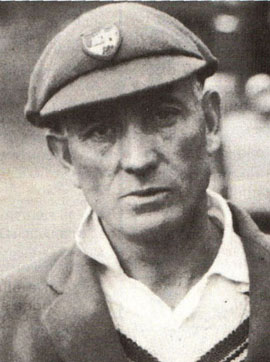
Charles Warrington Leonard Parker was an English cricketer, who stands as the third highest wicket taker in the history of first-class cricket, behind Wilfred Rhodes and Tich Freeman.

Tom Richardson was an English cricketer. A fast bowler, Richardson relied to a great extent on the break-back, a relatively long run-up and high arm which allowed him to gain sharp lift on fast pitches even from the full, straight length he always bowled. He played 358 first-class cricket matches including 14 Tests, taking a total of 2,104 wickets. In the four consecutive seasons from 1894 to 1897 he took 1,005 wickets, a figure surpassed over such a period only by the slow bowler Tich Freeman. He took 290 wickets in 1895, again a figure only exceeded by Freeman (twice). In 1963 Neville Cardus selected him as one of his "Six Giants of the Wisden Century".
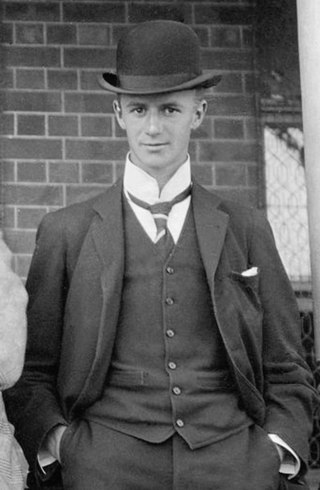
Charles Lucas Townsend was a Gloucestershire cricketer. An all-round cricketer, Townsend was classically stylish, left-handed batsman, who was able to hit well despite his slender build. His off-side strokes were particularly effective, and his driving allowed him to score at a consistent pace throughout his major innings. In his younger days Townsend was also a spin bowler, who relied chiefly on a big break from leg but could also turn the ball the other way. He was often extremely difficult on sticky wickets but very rarely effective on good ones.
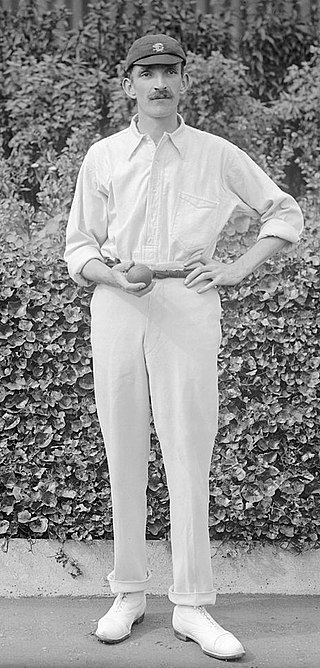
William Charles "Razor" Smith was a Surrey slow bowler. Nicknamed "Razor" because of his extreme thinness, Smith was a frail man and prone to serious injury; he could rarely get through a full season's cricket, but when fit and healthy, could command the sharpest off-break among bowlers of his day. He was also able to bowl a somewhat faster ball with a very high flight that turned a little from leg and, with any help from the pitch, would get up almost straight.
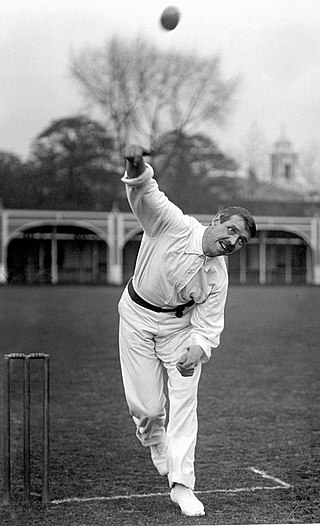
Albert William Hallam was an English off spin bowler who is primarily remembered, along with Thomas Wass, for giving Nottinghamshire an astonishing win in the County Championship of 1907. They did not lose a single match and managed to win fifteen out of nineteen games in which a ball was actually bowled. This is the highest proportion of wins by an undefeated side and the third highest proportion of wins in County Championship history – and the two higher figures were in very dry summers with almost no rain interruptions.
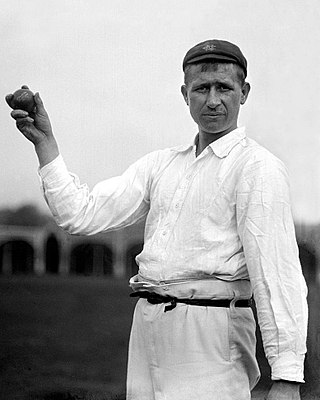
Thomas George Wass was a Nottinghamshire cricketer, a bowler best remembered, alongside Albert Hallam, for bowling that gave Nottinghamshire a brilliant County Championship win in 1907. Wass also holds the record for the most wickets taken for Nottinghamshire — 1633 for 20.34 each.

Harry Dean was an English cricketer who played for Lancashire and England.

Walter Mead was the principal bowler for Essex during their first two decades as a first-class county. As a member of the Lord’s ground staff, he was also after J.T. Hearne the most important bowler for MCC and Ground, who in those days played quite a number of first-class matches.
Walter Scott Lees was a Surrey and England cricketer who played in five Test matches against South Africa in 1906. On his debut, he took five wickets in the first innings in Johannesburg.

Holcombe Douglas "Hopper" Read was an English cricketer who played in one Test in 1935.
Richard Pollard was an English cricketer born in Westhoughton, Lancashire, who played in four Test matches between 1946 and 1948. A fast-medium right-arm bowler and a lower-order right-handed batsman who made useful runs on occasion, he played for Lancashire between 1933 and 1950, taking 1,122 wickets in 298 first-class matches; he is 10th highest wicket-taker for Lancashire.

Albert Edward Ernest Vogler was a South African cricketer. A leading all-rounder skilled both at batting and bowling, Vogler played cricket in South Africa prior to becoming eligible to play for Middlesex County Cricket Club in England after serving on the ground staff of the Marylebone Cricket Club at Lord's. He rose to prominence during the 1906 home Test series and then in England the following year: he was described during the latter as the best bowler in the world by Tip Foster, and named a Wisden Cricketer of the Year.
Frank Ernest Field or Ernest Frank Field was a Warwickshire fast bowler who is best remembered for sharing with Frank Foster the bowling honours in Warwickshire's flukish County Championship triumph in the abnormally dry summer of 1911 — the only time any county outside the "Big Six" won between 1890 and 1935.
1906 was the 17th season of County Championship cricket in England. The title was decided in the final round of matches with Kent County Cricket Club finishing just ahead of Yorkshire. George Hirst completed a unique "double Double" of 2,385 runs and 208 wickets. Tom Hayward broke Bobby Abel’s 1901 record for the most runs scored in a first-class season.
1907 was the 18th season of County Championship cricket in England. Nottinghamshire won their first official title. England played their sixth Test series against South Africa but it was the first to be held in England.

Sam Hargreave was the most successful bowler for Warwickshire until the success of Foster and Field in winning the 1911 County Championship.
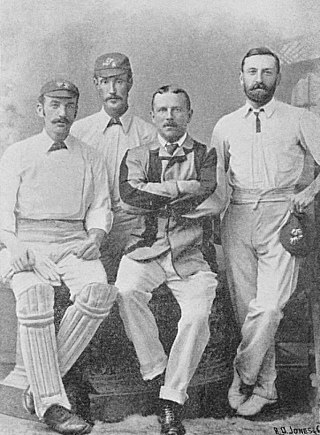
Alexander Watson was a Scottish first-class cricketer who played for Lancashire County Cricket Club. He was one Lancashire's first long-serving professionals, and in his prime formed part of a strong bowling attack with A. G. Steel, Dick Barlow and John Crossland that lifted Lancashire to success in the 1881 and 1882 seasons when they won 22 and lost only one of 29 inter-county matches.
Henry Robert Albert Kelleher is an English retired first-class cricketer who player for Surrey and Northamptonshire between 1955 and 1958. He was born in Bermondsey, London. He is the uncle of the former Kent cricketer Danny Kelleher.
Thomas Jayes was an English first-class cricketer who played for Leicestershire between 1903 and 1911. He was born and died at Ratby, Leicestershire. Jayes was a right-arm fast bowler and a hard-hitting lower middle-order right-handed batsman; unusually for fast bowlers of the era when he played, he was also rated as a good fielder.













